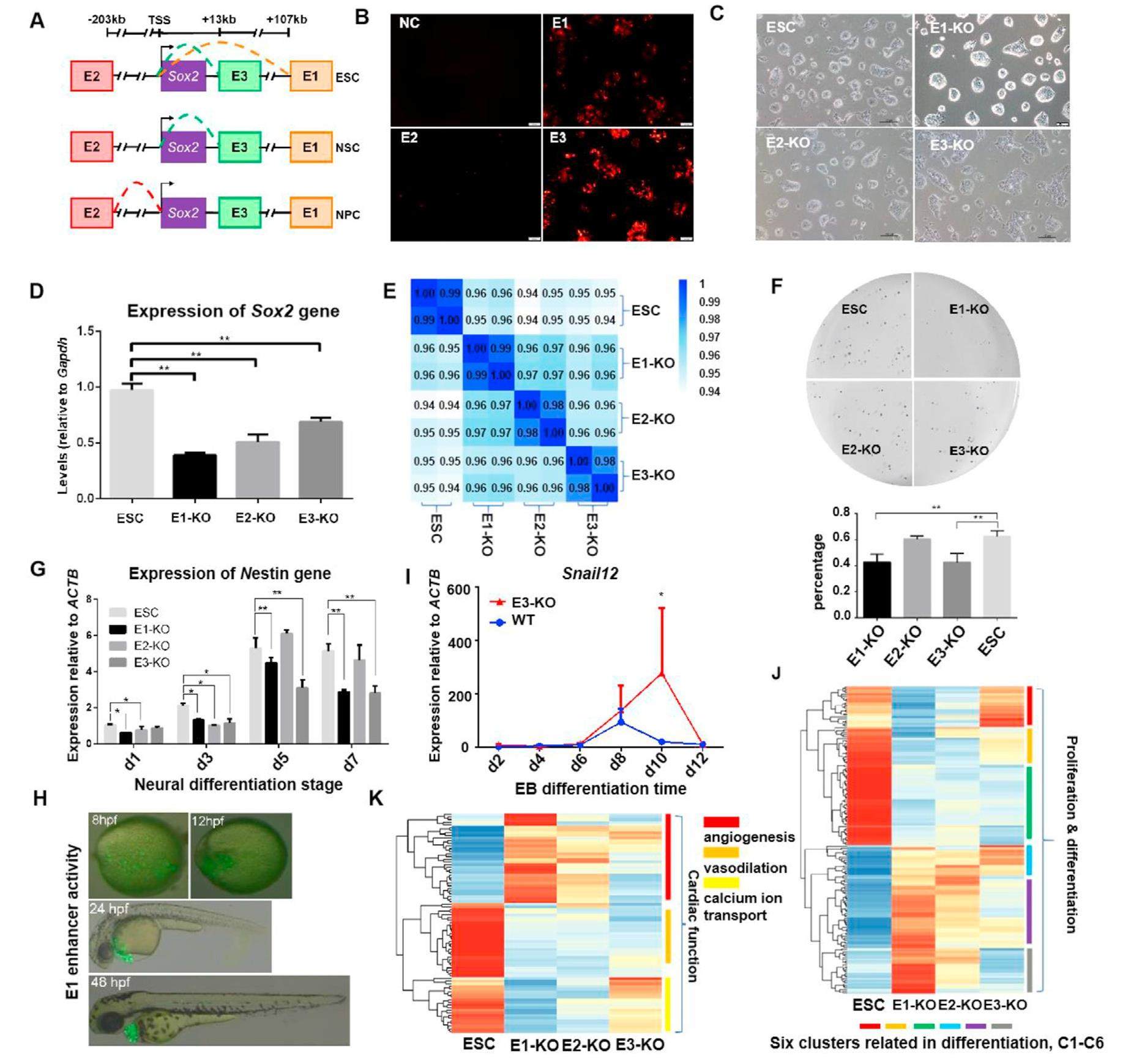
Distinct enhancer-promoter modes determine Sox2 regulation in mouse pluripotent cells


Sox2 is a key transfer factor for maintaining pluripotency and self-renewal in embryonic stem cells (ESCs), though the mechanism of its transcriptional regulation in ESCs has not been fully addressed. Distal enhancer-promoter interactions are vital for Sox2 transcription activity in mammals. However, how these diverse interactions individually influence Sox2 gene regulation in mouse ESCs remains unclear. Previous studies found that three distal enhancers (termed E1, E2, and E3) interact with Sox2 promoter. E1 forms an mESC-specific interaction, while E2 functions in mouse neural progenitor cells (mNPCs) and has not been shown to directly interact with Sox2 in mESCs. E3 can interact with Sox2 in mouse ESCs (mESCs), mouse neural stem cells (mNSCs), and mNPCs. Therefore, there are three classes of E-P associations in mESCs: specific, indirect, and common. In mESCs, E1 and E3 display enhancer activity, while E2 shows weak activity as measured by fluorescence reporter assays.
